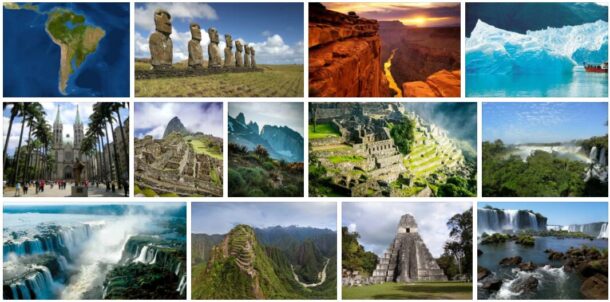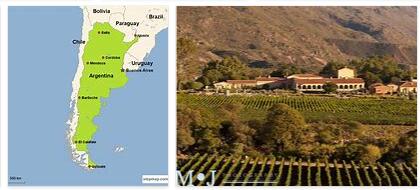South America
List of South American countries and their capitals
According to Countryaah, as of 2021, there are 12 countries in South America.
| Countries | Capital | Continent |
| Argentina | Buenos Aires | South America |
| Bolivia | La Paz | South America |
| Brazil | Brasilia | South America |
| Chile | Santiago | South America |
| Colombia | Bogota | South America |
| Ecuador | Quito | South America |
| Guyana | Georgetown | South America |
| French Guiana | Cayenne | South America |
| Paraguay | Asunción | South America |
| Peru | lime | South America |
| Suriname | Paramaribo | South America |
| Uruguay | Montevideo | South America |
| Venezuela | Caracas | South America |
* French Guiana: Overseas territory belonging to France. Source: AbbreviationFinder.org

→ More developed and less developed countries in South America
Together, the countries of South America join great forces in the world economic scenario. The Brazil has the largest economies in this subcontinent, as well as being the largest country in area. Brazilian GDP is approximately US $ 3.21 trillion, corresponding to the largest economy in Latin America as well.
The Brazil is still not a developed country, but its economy is developing, and some scholars believe that in a few years, that will debut in the ranking of the five largest economies in the world. The country exports several products, being one of the largest producers of soy, coffee, automobiles, ethanol, iron ore, among others.
However, South America also has some undeveloped nations. The poorest country in this subcontinent is Bolivia, based on GDP per capita. The Bolivia is in development, but faces many obstacles, whether in social aspects, either with low human development indices. More than half of its population lives in poverty.
Soils
During the cold times that characterize the Quaternary period (the last about 1.65 million years), the glaciers in the northern and central Andes had a slightly larger distribution than today. More extensive ice cover was found in the southern part of the Andes. In the Land of Fire and the southernmost Patagonia, the inland ice also covered the lowlands and reached its maximum extent all the way to the Atlantic coast. In some dry parts of South America there were large so-called pluvial lakes during the cold periods. The largest of these was Lake Forntitica (Lago Ballivián).
For almost the entire tertiary period (approximately 65–1.65 million years before today), South America was isolated from North America, and for a large part of the period only one island connection existed between the continents. The South American fauna underwent its own development, giving rise to a number of distinctive mammals. Only at the end of the Pliocene (about 3.5 million years ago) did the Panamanese emerge. As a result, South America was invaded by modern mammals from North America, which greatly contributed to reducing the age-old mammal fauna. Fossil mammals from the Tertiary and Quaternary periods are known from a number of places. Classic finds originate from the so-called pampas formation in northern Argentina.
The soils of South America are dominated by weathering soils and alluvial sediments. In the Land of Fire and the southernmost Patagonia, the soils are mainly moraine and other glacial deposits. Loose soils have a widespread distribution on Pampas.
The northeastern half of South America is dominated by heavily weathered and very ancient soils (ferral soles, acrisols and lixisols), located on geologically stable ground (the Guyanese shield and the Brazilian shield). There are also iron-rich plinthosols whose soil material can be petrified if it dries. On sandy soils there are arena soles and pod soles. In the flat areas along the Amazon, fluvisols (flooding soils) and slides are common.
In the area south of Brazil, the soils are conditioned by the warm-tempered and relatively dry climate, and the soil sequence becomes planosols, chernozems, castanozems and calcisols as the climate gradually becomes drier towards the Andean rain shadow. In the Andes leptosols (thin soils) dominate, but in areas of volcanism, andosols are also common. Otherwise, there are sliding suns in flat, poorly drained areas across the continent as well as salt soils in semi-arid areas of Argentina and northern Chile.



